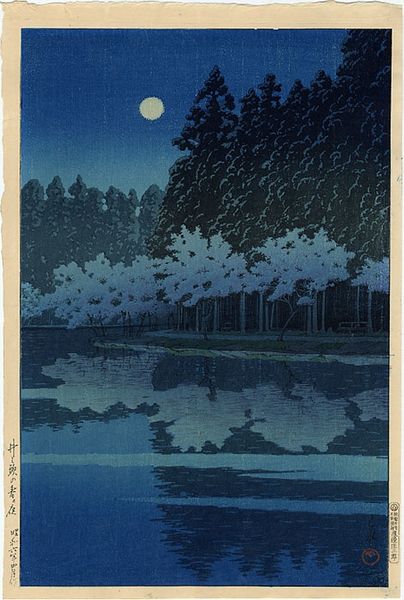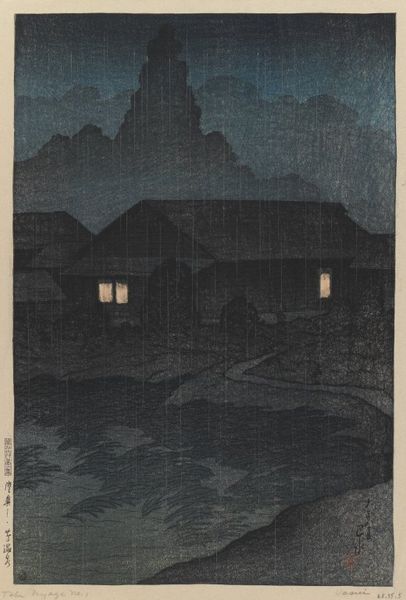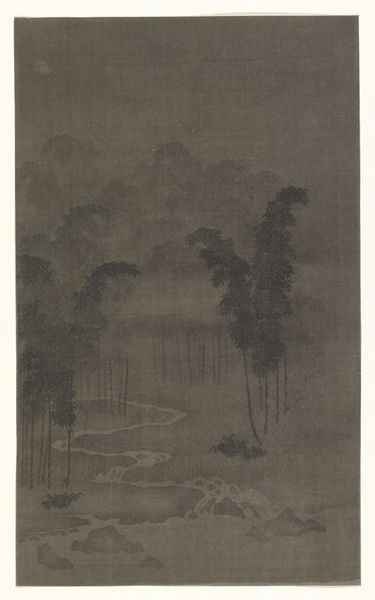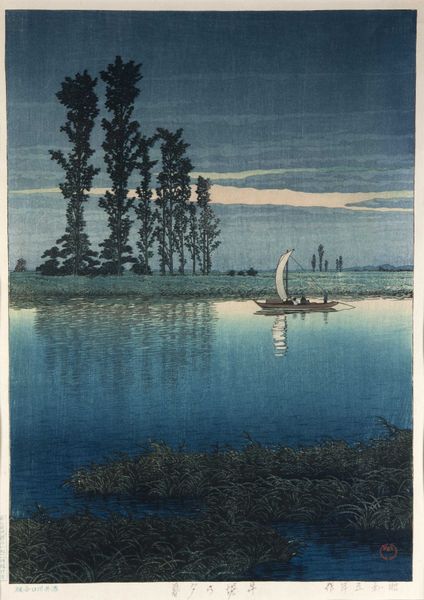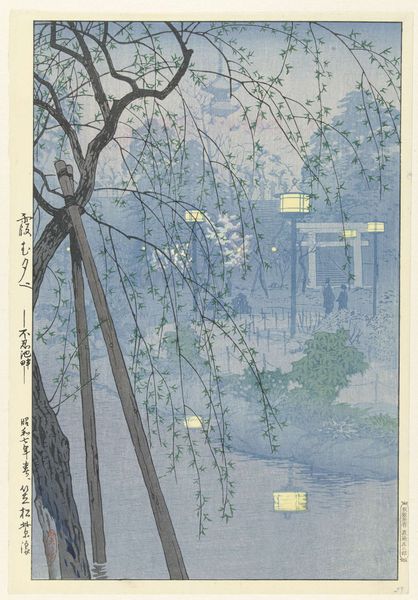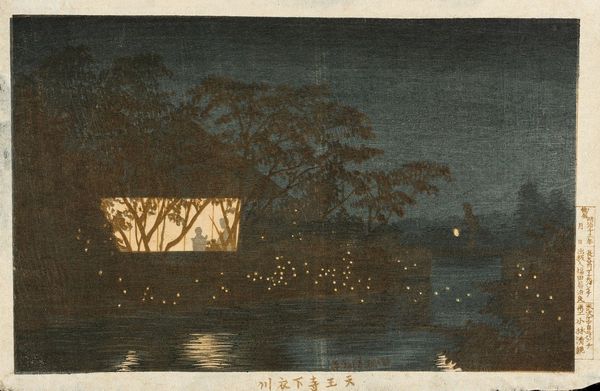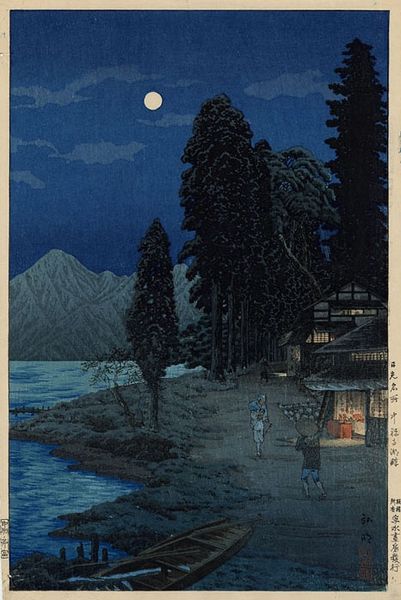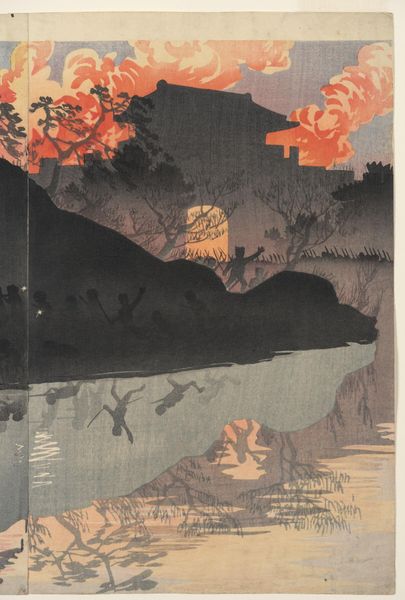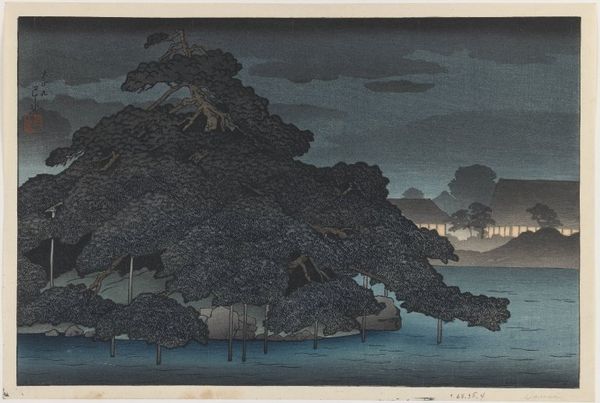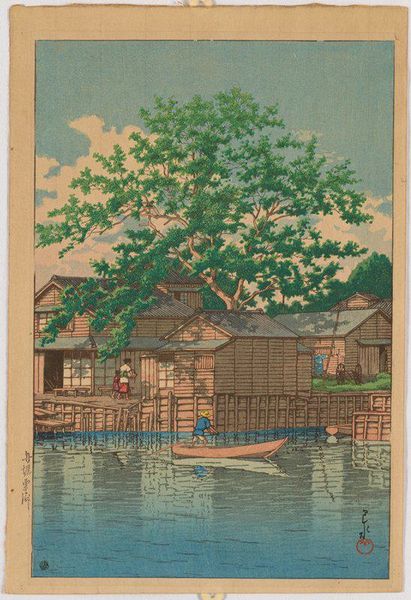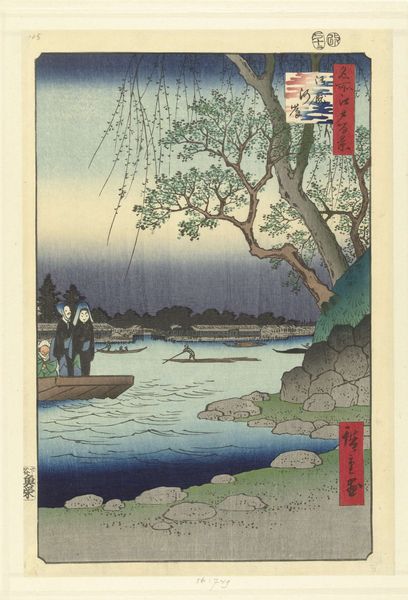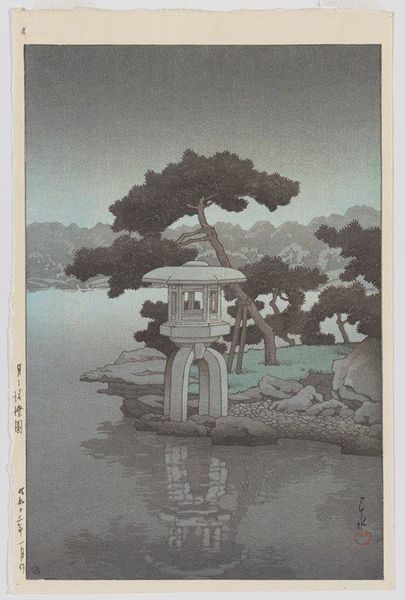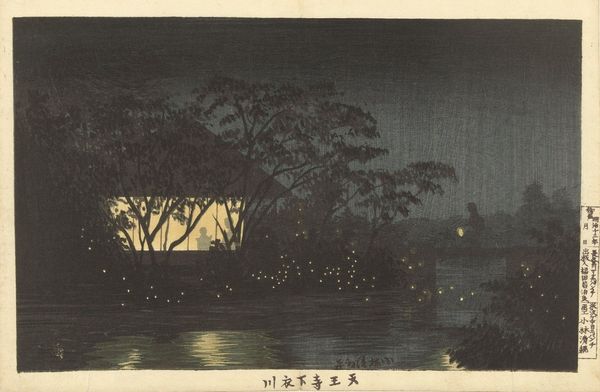
Dimensions: 14 7/8 × 10 5/8 in. (37.8 × 27 cm) (image)23 × 19 × 1 1/2 in. (58.42 × 48.26 × 3.81 cm) (outer frame)
Copyright: No Copyright - United States
Editor: Here we have Hasui Kawase's "Ōmiya in Rain," likely created in the 1930s. It's a woodblock print rendered in watercolor and ink. The deep blues and the glowing reflections in the water give the scene a peaceful, almost meditative quality. What strikes you most about the imagery used in this piece? Curator: The enduring image is that of the lighted window, a warm beacon against the cool, indeterminate darkness. The symbol of 'the window' frequently suggests voyeurism, or perhaps an openness to external engagement. Here it glows golden and suggestive of interior peace and domesticity in contrast to the rainy night. How might this contrast act upon the viewer, psychologically speaking? Editor: I suppose it invites the viewer to compare their own emotional state to the calm within. The building itself is muted, nearly hidden; the symbolic glow seems to command our attention. Curator: Exactly. Notice how the artist also employs the symbol of water. Rainy water is often representative of cleansing and transformation. Psychologically, do you think there’s a human element also presented that water symbol may also point to? Editor: Perhaps an implication that one might look deeper into one’s own symbols for more self-discovery? Curator: Precisely. Cultural memory plays a key role. Consider the prevalence of light overcoming darkness within many cultures; Hasui subtly plays upon these deeply ingrained narratives. Editor: So it’s not just a pretty landscape, but a collection of symbols triggering emotions and cultural connections within us. Curator: Indeed. We see how a seemingly simple scene actually taps into something much older and universally felt. Editor: It gives me a lot to think about next time I see light reflected in water! Thanks for shedding light on that for me.
Comments
minneapolisinstituteofart almost 2 years ago
⋮
On back: red seal 参百五拾枚限絶版、第八十四號 {sanbyakugojū mai kagiri zeppan, dai hachijūyon gō} (edition of 350, no. 84); stamp: MADE IN JAPAN. Second edition, published by Kawaguchi alone in the 1930s.
Join the conversation
Join millions of artists and users on Artera today and experience the ultimate creative platform.
